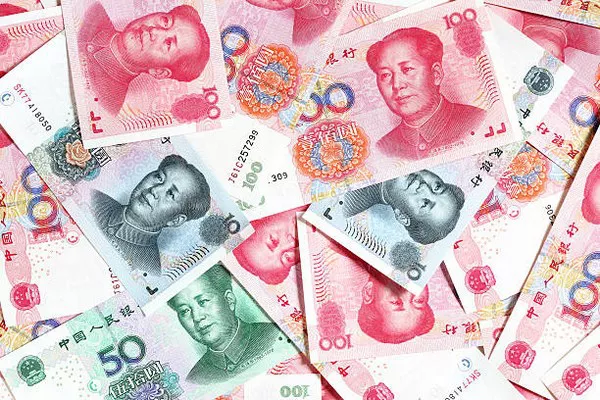In the realm of global finance and international trade, standardized currency codes play a pivotal role in facilitating seamless transactions and fostering economic cooperation. Each country is assigned a three-letter currency code, making it easier for businesses, financial institutions, and individuals to navigate the complex web of international commerce. China, as one of the world’s economic powerhouses, has its own unique currency code that distinguishes it on the global stage. In this article, we will explore the three-letter currency code for China and delve into the significance of its currency in the international financial landscape.
The Renminbi and Its Symbol
The official currency of the People’s Republic of China is the Renminbi (RMB), and its primary unit is the Yuan (CNY). The Renminbi is often used interchangeably with the Yuan, but they are technically distinct. While Renminbi is the official name of the currency, Yuan refers to the unit of account. To symbolize the Chinese currency, the official symbol “¥” is used, representing both the Renminbi and the Yuan.
Understanding the Currency Code
Every country’s currency is assigned a three-letter code as per the International Organization for Standardization (ISO) 4217 standard. The ISO 4217 code for the Chinese currency is CNY, which stands for Chinese Yuan. The adoption of standardized currency codes is crucial for international trade and finance, providing a uniform system for identifying and conducting transactions in various currencies.
Historical Context of the Renminbi
Before the widespread use of the Renminbi, China had a tumultuous history of currency systems. The Renminbi was officially introduced in December 1948, replacing the Chinese Nationalist government’s currency. The new currency aimed to stabilize the economic situation and lay the groundwork for China’s post-revolutionary economic policies. Over the years, the Renminbi underwent several reforms and adjustments to adapt to the changing economic landscape.
The Renminbi’s Journey to Internationalization
In recent decades, China has actively pursued the internationalization of the Renminbi as part of its broader economic and financial goals. The gradual opening up of China’s economy and financial markets has led to an increased global presence of the Renminbi. One significant milestone in this journey was the inclusion of the Renminbi in the International Monetary Fund’s (IMF) Special Drawing Rights (SDR) basket in 2016. This acknowledgment by the IMF marked a recognition of the Renminbi as a global reserve currency.
Implications of the Renminbi’s Internationalization
The internationalization of the Renminbi has far-reaching implications for global finance and trade. As the Renminbi gains prominence, businesses and governments around the world are increasingly considering it as a viable alternative to traditional reserve currencies like the U.S. Dollar and the Euro. The use of the Renminbi in international trade can potentially reduce dependency on a few dominant currencies, fostering a more diversified and resilient global financial system.
Role in International Trade
The Renminbi’s internationalization has had a profound impact on international trade dynamics. With the increasing acceptance of the Renminbi as a settlement currency, China has expanded its economic influence globally. Trade partners are increasingly willing to transact in Renminbi, leading to reduced reliance on third-party currencies and potentially lowering transaction costs for businesses involved in Sino-foreign trade.
Bilateral Currency Agreements
To promote the use of the Renminbi in international trade, China has entered into various bilateral currency swap agreements with several countries. These agreements facilitate trade and investment by allowing parties to settle transactions in Renminbi rather than the currencies of third-party nations. Such arrangements contribute to the Renminbi’s growing role in cross-border transactions and reinforce China’s commitment to fostering a more diversified global monetary system.
See Also Are RMB and CNY the Same Currency?
Renminbi’s Position in Global Reserves
The internationalization of the Renminbi has also impacted its status in global reserves. While the U.S. Dollar remains the dominant global reserve currency, central banks and sovereign wealth funds are diversifying their reserve holdings by including the Renminbi. The gradual inclusion of Renminbi-denominated assets in global investment portfolios reflects the currency’s increasing credibility on the international stage.
Challenges and Considerations
Despite the positive strides made by the Renminbi in the international arena, challenges remain. Capital controls, concerns about the stability of China’s financial system, and geopolitical factors are among the obstacles that may slow the Renminbi’s ascent to becoming a truly global reserve currency. Additionally, ongoing efforts by Chinese authorities to balance economic reform with control present complexities that could influence the Renminbi’s global trajectory.
Conclusion
The three-letter currency code for China, CNY, represents the Renminbi’s growing prominence in the international financial landscape. From its introduction in the aftermath of the Chinese revolution to its current status as a global reserve currency, the Renminbi has come a long way. The internationalization of the Renminbi reflects China’s commitment to fostering a more diversified and inclusive global monetary system. As we navigate the complexities of the evolving international financial order, the Renminbi’s role and influence are poised to continue expanding, shaping the future of global finance.


